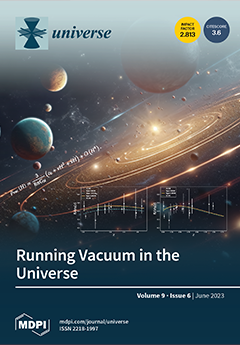In this work, we aim to characterize the effective scale height at the ionosphere F2-layer peak (
H0) by using in situ electron density (
Ne) observations by Langmuir Probes (LPs) onboard the China Seismo-Electromagnetic Satellite (CSES—01). CSES—01 is a sun-synchronous satellite orbiting at an altitude of ~500 km, with descending and ascending nodes at ~14:00 local time (LT) and ~02:00 LT, respectively. Calibrated CSES—01 LPs
Ne observations for the years 2019–2021 provide information in the topside ionosphere, whereas the International Reference Ionosphere model (IRI) provides
Ne values at the F2-layer peak altitude for the same time and geographical coordinates as CSES—01. CSES—01 and IRI
Ne datasets are used as anchor points to infer
H0 by assuming a linear scale height in the topside representation given by the NeQuick model. COSMIC/FORMOSAT—3 (COSMIC—1) radio occultation (RO) data are used to constrain the vertical gradient of the effective scale height in the topside ionosphere in the linear approximation. With the CSES—01 dataset, we studied the global behavior of
H0 for daytime (~14:00 LT) and nighttime (~02:00 LT) conditions, different seasons, and low solar activity. Results from CSES—01 observations are compared with those obtained through Swarm B satellite
Ne-calibrated measurements and validated against those from COSMIC—1 RO for similar diurnal, seasonal, and solar activity conditions.
H0 values modeled by using CSES—01 and Swarm B-calibrated observations during daytime both agree with corresponding values obtained directly from COSMIC—1 RO profiles. Differently,
H0 modeling for nighttime conditions deserves further investigation because values obtained from both CSES—01 and Swarm B-calibrated observations show remarkable and spatially localized differences compared to those obtained through COSMIC—1. Most of the
H0 mismodeling for nighttime conditions can probably to be attributed to a sub-optimal spatial representation of the F2-layer peak density made by the underlying IRI model. For comparison,
H0 values obtained with non-calibrated CSES—01 and Swarm B
Ne observations are also calculated and discussed. The methodology developed in this study for the topside effective scale height modeling turns out to be applicable not only to CSES—01 satellite data but to any in situ
Ne observation by low-Earth-orbit satellites orbiting in the topside ionosphere.
Full article





